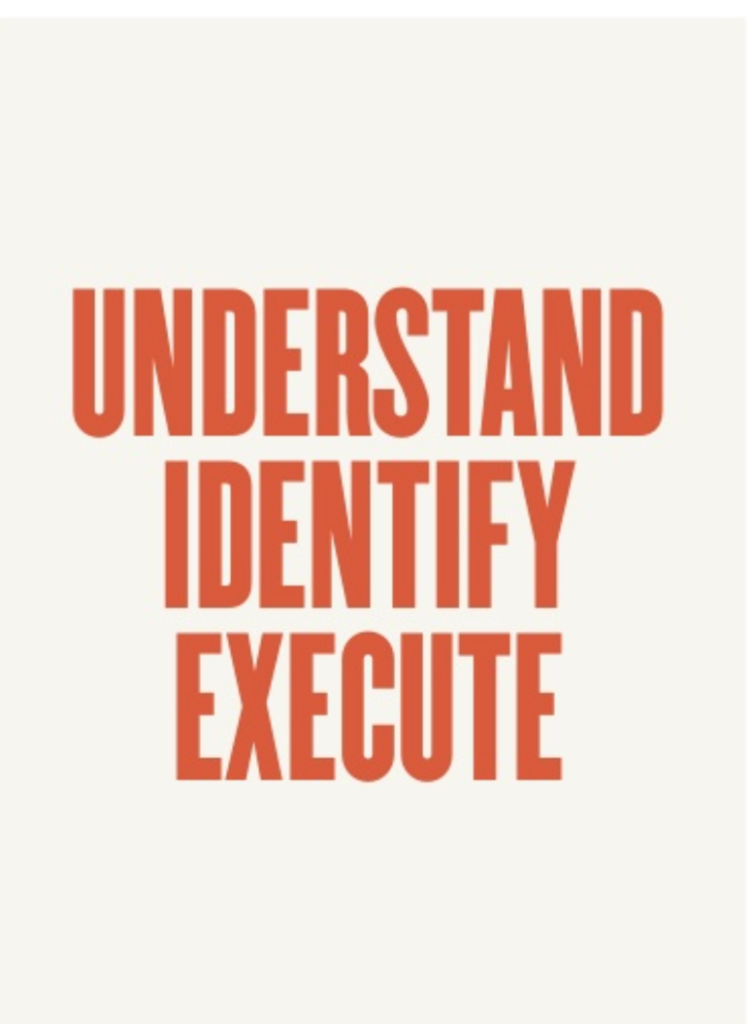Understand, Identify, Execute
The three words in the title are on posters all across Facebook’s campus. They’re a framework for thinking in stages about product development, and around choosing KPIs.

Understand, Identify, Execute poster
The toy example used to illustrate the different steps was imagining you had a prehistoric family to take care of. Understanding means choosing the right high-level objectives. In the prehistoric family, ‘survive’ is the most important one, and ‘get food’ is a key driver for that. A failure in understanding is if you had instead thought ‘having fun’ is the most important bit and drove your family to extinction by successfully chasing that strategy.
Identify is about finding the right levers that push us the furthest forward in the chosen direction. Maybe you’ve identified to get food you can fish in the small pond that’s right across your family’s cave. But maybe you’re figuratively (and literally) fishing in the wrong pond. Maybe a bit more search and thinking will lead you to see there’s a grove just around the pond with plenty of wildlife you can hunt more easily, and supplying more food on every catch. A failure in identification is about not attacking the strategy with the most effective tactic.
Failed identification might cause us to work really hard and achieve little, or worse - use the wrong KPI making us think we progressed a lot, but just creating a Goodhart’s effect where we’re optimizing into a bad outcome - like spamming clients to the point of ignoring e-mails. It’s hard work!
Execution is obvious - it’s whether you effectively actuate the desired action. Failure in execution means the team fumbled or took too long.
This framework helped us check we went through all stages in developing a product, which we would do iteratively. It’s legit to take weeks off of some of the team’s work (sometimes the entire team for a new product) to spend on ‘understand work’, that doesn’t ship anything impactful but just maps out the area, the needs of target audiences and the options to address them. Facebook re-‘understood’ Newsfeed several times (leading to changes in the core metric from time spent, to weighted user feedback, a measure of actively engaging with content (e.g shares, likes and comments), to ‘meaningful connections’ [1], and each time, identified the levers to move these metrics the most (show videos→time spent; show clickbaity content→WUF; show specific types of friend and group content→meaningful connections), which overall grew the company. Sometimes it may have led to over-optimization in one area [2], but it’s overall better than not having moved, or than having moved at random or immeasurably (i.e., at the very least we hit the targets we set ourselves, increased Facebook’s overall growth, retention and revenue by monitoring these while driven by each of these focuses).
[2] Some critics see this, often simplistically, as the root of some of Facebook’s issues or as more than a tradeoff that has to be made when you rank items. I don’t subscribe to that view, nor is it the purpose of this blog to discuss Facebook’s merits and faults - but rather to stay at the level of a very useful product development methodology